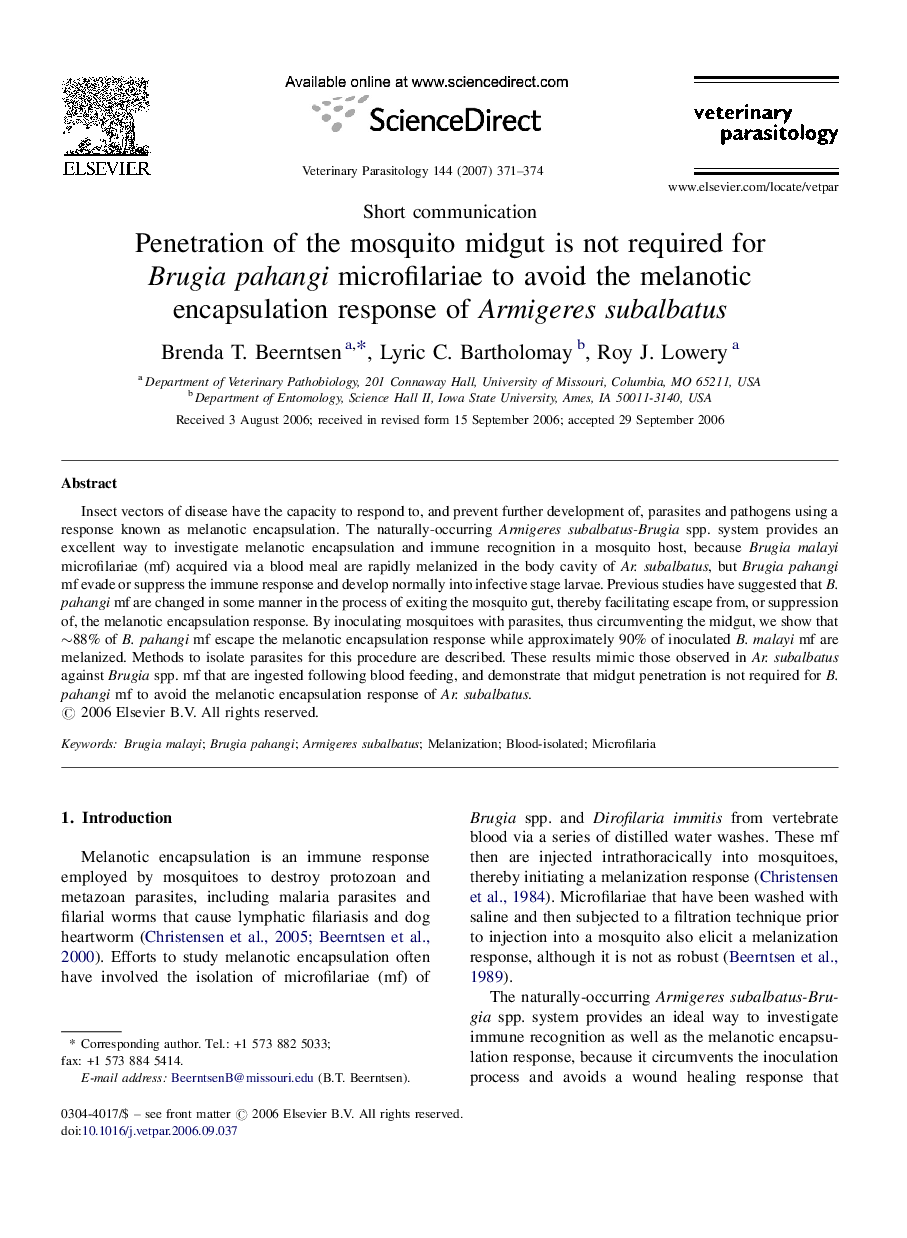| Article ID | Journal | Published Year | Pages | File Type |
|---|---|---|---|---|
| 2472137 | Veterinary Parasitology | 2007 | 4 Pages |
Abstract
Insect vectors of disease have the capacity to respond to, and prevent further development of, parasites and pathogens using a response known as melanotic encapsulation. The naturally-occurring Armigeres subalbatus-Brugia spp. system provides an excellent way to investigate melanotic encapsulation and immune recognition in a mosquito host, because Brugia malayi microfilariae (mf) acquired via a blood meal are rapidly melanized in the body cavity of Ar. subalbatus, but Brugia pahangi mf evade or suppress the immune response and develop normally into infective stage larvae. Previous studies have suggested that B. pahangi mf are changed in some manner in the process of exiting the mosquito gut, thereby facilitating escape from, or suppression of, the melanotic encapsulation response. By inoculating mosquitoes with parasites, thus circumventing the midgut, we show that â¼88% of B. pahangi mf escape the melanotic encapsulation response while approximately 90% of inoculated B. malayi mf are melanized. Methods to isolate parasites for this procedure are described. These results mimic those observed in Ar. subalbatus against Brugia spp. mf that are ingested following blood feeding, and demonstrate that midgut penetration is not required for B. pahangi mf to avoid the melanotic encapsulation response of Ar. subalbatus.
Related Topics
Life Sciences
Agricultural and Biological Sciences
Animal Science and Zoology
Authors
Brenda T. Beerntsen, Lyric C. Bartholomay, Roy J. Lowery,
